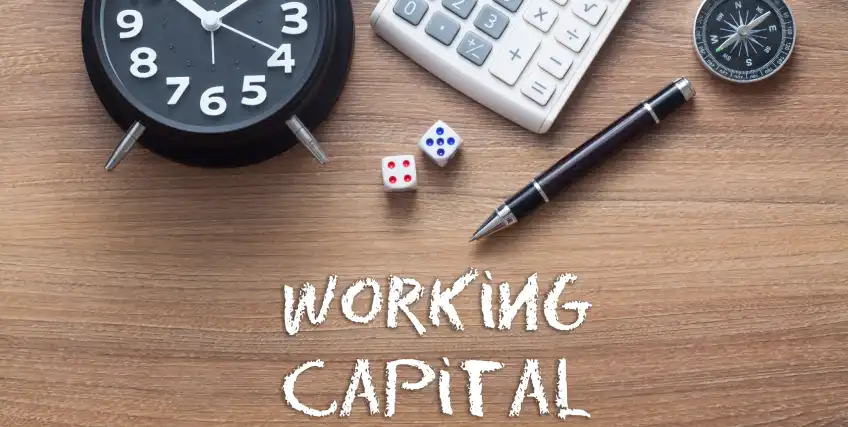Guide to Calculate ROI of a Small Business Loan
April 06, 2025 | Last Updated on: April 06, 2025

In this article:
- How to calculate ROI for a small business loan
- Strategies to maximize the benefits of a business loan
- What’s the difference between ROI and APR?
- Key Takeaways
To be a small business owner, you have to know how to manage your finances.
But many entrepreneurs are inexperienced and uncomfortable when it comes to taking out their first small business loan. After all, taking out a loan does involve some risk, so when does that risk make sense? And when is the risk greater than the potential reward? The best way to answer these questions is to learn how to calculate the return on investment (ROI) of a small business loan.
In this guide, we’ll show you how to calculate the ROI of a small business loan and explore strategies to maximize its benefits.
Whether you’re seeking funding for expansion, equipment, real estate, or working capital, this article will provide you with valuable insights to make informed financial decisions.
Steps to Calculate ROI for a Small Business Loan
Calculating the return on investment (ROI) of a small business loan isn’t as simple as plugging numbers into a formula (although we’ll get to that). There are a few steps you need to take in order to get the right numbers for your calculation.
First, determine the total cost of the loan. Finding the loan cost involves identifying the lump sum borrowed and the interest rate charged by the lender. And be sure to include any extra fees or charges that come with the loan, such as origination fees or closing costs. By adding these costs up, you can find the total amount that needs to be repaid over the loan term.
You may also like: Revenue based financing for startups, how to get a small business loan
Next, assess the returns that you anticipate will be generated by the loan investment. How much revenue or income will come from using the loan amount. Take into account any additional profits or cost savings resulting from the loan. For example, increased sales, improved efficiency, or launching new products. Adding these together will give you the total gains attributable to the loan (note: this is different than net profit).
Now it’s finally time to calculate the ROI. Apply the ROI formula: ROI = (Total Returns – Total Cost) / Total Cost * 100. Subtract the total cost of the loan from the total returns generated, and then divide by the total cost. Multiply the result by 100 to express the ROI as a percentage.
For example, if the return on a loan is $115,000, and the total cost of the loan is $100,000, then your equation would be: ($115,000 – $100,000)/$100,000 * 100, which equals 15% ROI.
A positive ROI means that the loan is financially beneficial. Assess the ROI alongside other financial metrics to make informed decisions about its impact on your business.
Strategies to Maximize the Benefits and Mitigate Risks of a Small Business Loan
While calculating the ROI of a small business loan can give you valuable insights, it’s just as important to be proactive about getting the most out of your loan. Here’s a few suggestions to help you do that:
- Be Strategic: What is your overall business strategy? How does a loan fit into it? At its core, a strategy is just a set of limiting decisions that focuses where you spend your time, energy, and money. Your strategy should define success, and tell you where to play, how to win, and what capabilities you need in order to achieve that success. You should only apply for a loan if it fits into your strategy and you can forecast a positive ROI.
- Develop a Detailed Business Plan: A strong business plan is the roadmap for your business. Outline your goals and growth targets, along with how you will achieve them. A detailed business plan gives clarity on how the loan will be invested, ensuring that the funds are allocated towards revenue-generating activities and essential business needs.
- Evaluate Your Loan Options: Before taking out a small business loan, research the different loan options available. For example, a business line of credit, merchant cash advance, or invoice factoring may be better for you in some situations. Compare average interest rates, repayment terms, underwriting fees, and conditions offered by various business banks so that you understand the initial cost and the investment amount.
- Monitor Cash Flow: Effective cash flow management is crucial to ensure the smooth repayment of the loan. Don’t just look at your annual revenue, regularly monitor your cash flow statements, track income and expenses, and make necessary adjustments to maintain a healthy cash flow. Timely payments reduce the impact of interest and penalties, improving the overall ROI of the loan.
- Invest in Efficiency: Put some of the loan towards investments that make your company more productive. For example, you may want to upgrade equipment, purchase technology, or automate processes to streamline operations and reduce costs.
- Seek Professional Advice: Financial advisors who specialize in small business financing can provide valuable guidance. Look for people who have experience with loan utilization, financial planning, and growth strategies. Their expertise can help you make informed decisions, minimize risks, and even help you get low interest rates.
- Continuously Monitor and Review Performance: Regularly track how your business is doing and make sure the loan is paying off. Compare actual results with projected figures from your business plan to see whether the loan is giving you the returns you expected. And don’t be afraid to make adjustments to get what you need from the loan. For example, you may need to adjust your pricing in order to increase sales (or profits) in order to maintain or achieve positive ROI. Or you may need to launch a marketing campaign to attract more sales, even if this isn’t something you had considered when you were creating your initial investment plan.
Average Business Loan Rates: What to Know About Interest Costs
Factors that affect business loan interest rates
If you’re new to business loans, you might be surprised to learn that terms loan you are offered aren’t set in stone. There are several factors that affect how much interest you pay and how long you’ll make monthly payments.
These include creditworthiness, the lender and type of lender that you’re using (online lenders may offer different terms than traditional banks and credit unions), economic conditions, the age of your business (a brand new business won’t have a credit history and will find it harder to get some types of financing), the collateral you’re offering up, and the life of the loan you’re seeking.
SBA loans (loans that are partially backed by the Small Business Administration) also may have lower interest rates, since risk is reduced for the lenders. If you hear a lender talking about their prime rate, that is their lowest interest rate that they offer to their lowest-risk customers.
How to get the best business loan interest rate
To get the best business loan interest rate, start by building a relationship with your lender. This won’t guarantee better rates, but having a relationship with business lenders means they can keep you updated on opportunities that might benefit your company.
You should also make sure that you have good credit and take steps to correct anything that is hurting your creditworthiness. This means making all existing debt payments on time, and avoiding taking out any new credit lines or opening any new credit cards until your loan is approved.
You can also offer more collateral when taking out your loan, as a loan that is secured by collateral may receive better rates. Loans with fixed interest rates may also be a better option for you than loans with variable interest rates, as the fluctuation in a variable rate loan may ultimately leave you with higher interest rates.
Current average business loan interest rates
At the macro level, business loan interest rates are affected by things like the economy and federal reserve interest rates, but at the micro level, they can be affected by things like your company’s credit history and the type of loan that you are taking out.
As such, predicting the interest rates with accuracy is difficult, but for Q1 of 2024, the average rate for new fixed rate loans was 8.594% and the average rate for variable rate loans was 8.702%.
SBA loan rates range from 6.5% down to 3%, depending on the loan amount. For example, for SBA 7 loans of $50,000 or less have an interest rate of 6.5% plus base rate, while loans larger than $350,000 have an interest rate of 3% plus base rate.
What is the Difference Between ROI and APR?
When it comes to small business lending, all of the terms and acronyms can be confusing. Let’s look at the difference between two important terms: ROI (Return on Investment) and APR (Annual Percentage Rate). ROI measures the profitability or return generated from an investment, indicating how effectively an investment has performed. It is calculated by dividing the net profit or gain from an investment by the initial investment cost and expressing it as a percentage.
On the other hand, APR is a measure of the cost of borrowing, typically associated with loans or credit products. It represents the annualized interest rate, business loan fees, and other costs incurred by the borrower. While ROI focuses on the returns gained from an investment, APR focuses on the costs associated with borrowing funds.
Takeaways
In sum:
- The formula for calculating business loan ROI is: (Total Returns – Total Cost) / Total Cost * 100.
- To get a meaningful result from this formula, you need to use meaningful and accurate numbers in your forecasts.
- You should only seek financing if you have a clear strategy and a solid business plan for executing that strategy that requires financing in order to be successful. If you don’t have these yet, take some time and develop them.
- Don’t be afraid to ask for input or advice from people with more experience.
- Don’t be afraid to pivot your strategy or tactics if they aren’t working.
How Biz2Credit Can Help
When it comes to small business loans, Biz2Credit is here to help. Biz2Credit offers a range of loan products, resources and services that can support your company. Here’s how Biz2Credit can help:
- Personalized service: Biz2Credit provides a user-friendly platform where you can input your business information and loan requirements, and receive personalized loan offers tailored to your needs. This enables you to evaluate different term -loan, interest rates, and repayment options to make an informed decision.
- Loan Application Assistance: Applying for a small business loan can be a time-consuming process. Biz2Credit simplifies this process by offering an easy, online application. Through their platform, you can complete your loan application efficiently, ensuring accuracy and completeness. Their team of experts is also available to provide guidance and answer any questions you may have.
- Business Loan Calculators and Tools: Biz2Credit has several loan calculators and financial tools that can help you estimate business loan ROI and assess the financial impact of different scenarios. These tools let you input relevant loan details and generate projections so you can make data-driven decisions about loan affordability and potential returns.
- Financial Advisory Services: If you require personalized guidance and expert advice, Biz2Credit’s financial advisory services can be a valuable resource. Their team of financial professionals specializes in small business finance and can provide in-depth analysis, strategic insights, and customized recommendations to optimize your loan business loan ROI.
- Educational Resources: Biz2Credit understands the importance of knowledge and education in the loan ROI calculation process. They offer a wealth of educational resources, including articles, guides, and webinars, covering various aspects of small business financing and loan ROI analysis. These resources can enhance your understanding and empower you to make informed decisions.
Biz2Credit’s commitment to small businesses and their expertise in loan financing make them a trusted partner in your loan ROI journey. Whether you’re just starting to explore loan options or seeking support in the application process, Biz2Credit offers the tools, guidance, and resources to help you make the most informed decisions for your small business.
Joyal and Sarvinder know this from experience. These two entrepreneurs had a vision to open a restaurant that would connect their community with nostalgic food from their culture. Following the above steps convinced them that financing was a smart move, so they took the plunge and began working with Biz2Credit, who financed their dream and let them finally open the doors to their new restaurant, Taste of Mumbai.
With Biz2Credit’s assistance, you too can navigate the loan landscape with confidence, calculate business loan ROI accurately, and position your small business for success.
FAQ:
What is the ROI of business loan?
ROI is short for “Return on Investment.” In the case of a business loan, it means “How much additional profit can I expect to make because I took out this loan?”
What is a good loan interest rate for a business?
A good interest rate is one that will allow you to accomplish your goal with the loan, while earning a positive return on investment. In other words, even if interest rates are high, if it allows you to solve a business problem and grow your company, then you can consider that a good interest rate. A good interest rate will also depend on the best interest rate that you can get. For example, if you have bad credit, you won’t have eligibility for the best interest rates. And if you can offer collateral, you can likely get a lower rate.
What is a good return on a business loan?
Because loans can be used for so many things, there is no single answer to this question. For example, if a loan is used to help you meet payroll during the slow season, the ROI may be that you didn’t lose some of your staff, which is difficult to put a value to unless you are intimately familiar with the cost of recruiting. On the other hand, if you use the loan to purchase a new piece of equipment that allows you to produce X new widgets every day or see X new customers, then you might be able to expect a high ROI.
How do you calculate the return on investment (ROI) for a business loan?
The formula for calculating the ROI of a business loan is simple:
ROI = (Gains – costs)/cost of the investments
So if your loan had a return of $115,000 and cost $100,000, it would look like this:
($115,000 - $100,000)/$100,000 = 15
The difficult part in answering this question is actually tracking the return on your loan, that is, actually figuring out the value that the loan added to your business versus the value added by other aspects of your businesses.
What factors do lenders use to determine Business Loan Interest Rates?
When determining interest rates, lenders look at things like federal reserve interest rates, economic conditions, your company’s credit history (or sometimes your personal credit score if you’re a new business), the type of business loan, the collateral you are offering, and what you intend to use the loan for.




